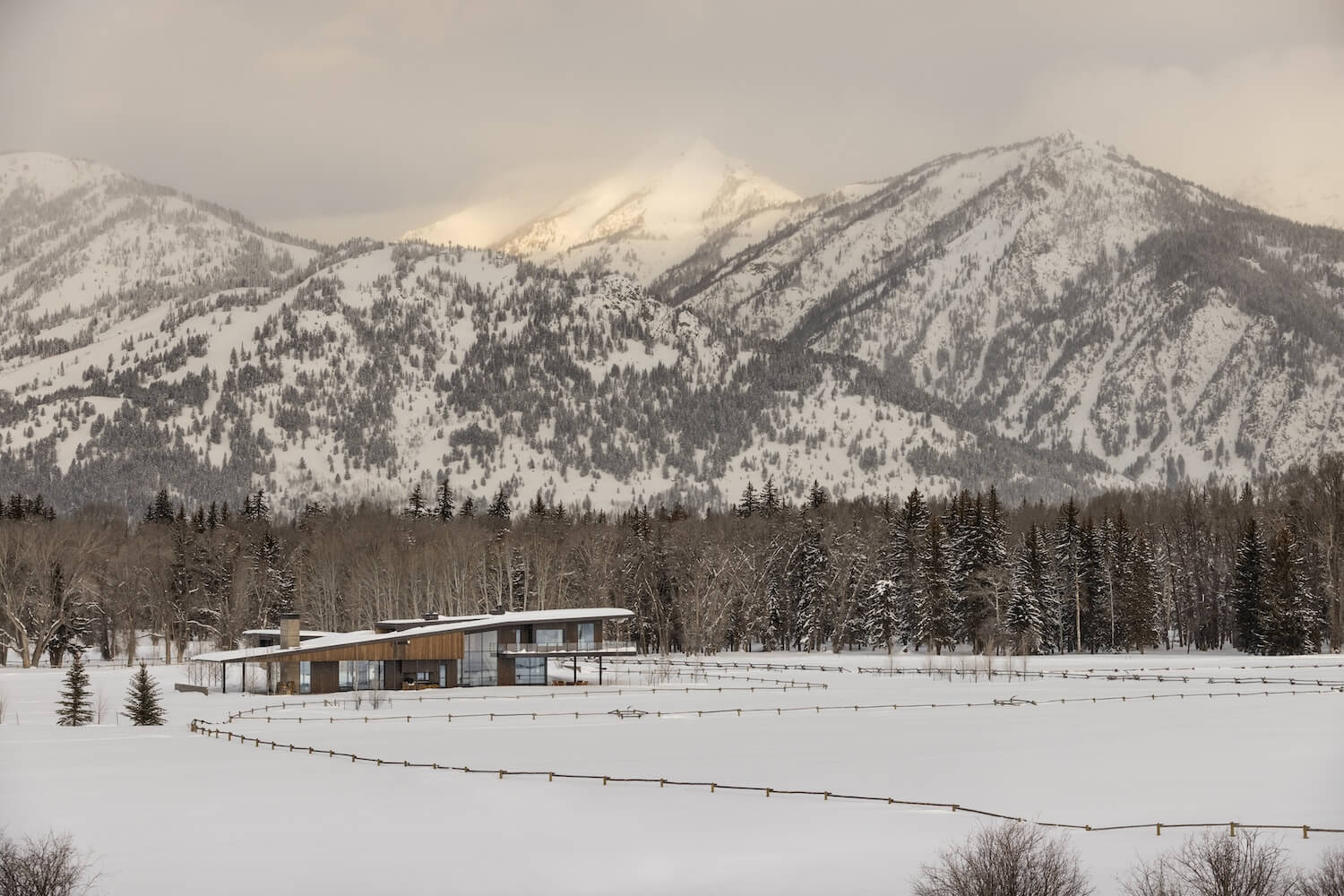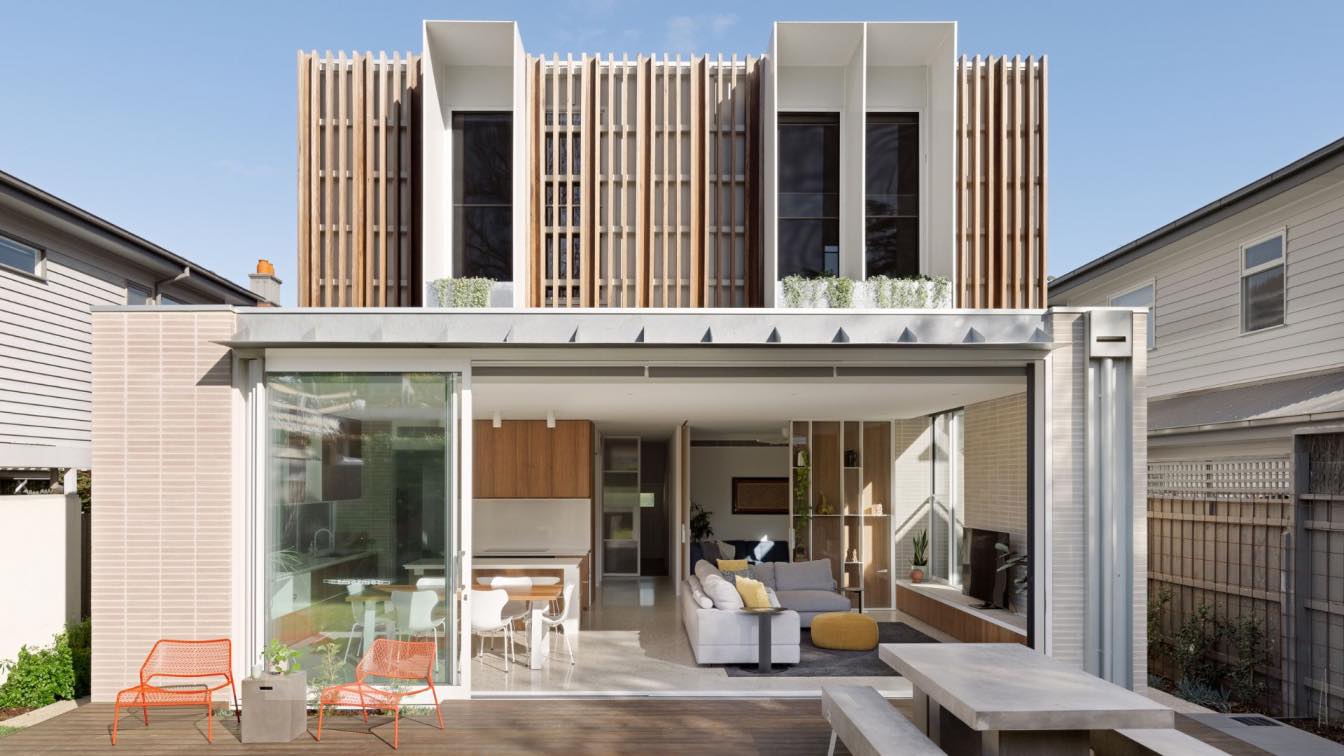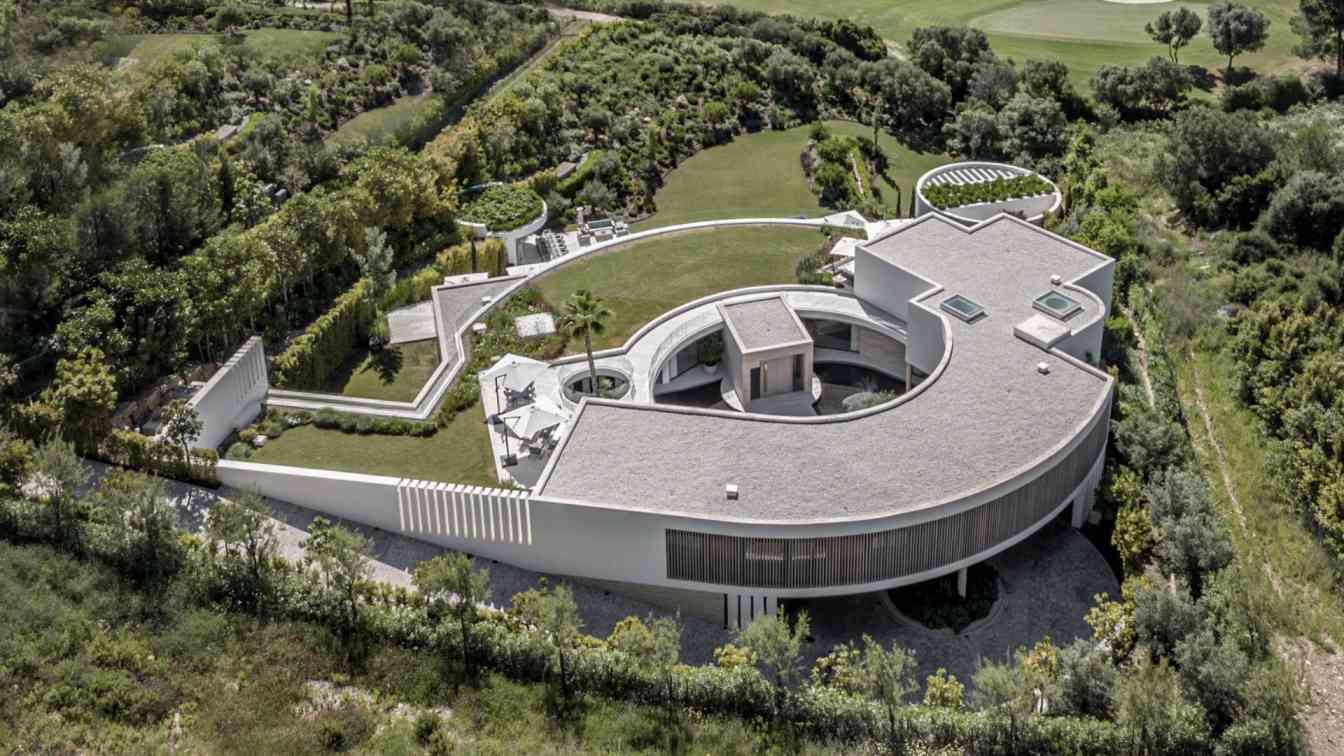CLB Architects: Sited next to a band of cottonwoods and aspens occupying the former riverbed of the Snake River, Black Fox Ranch consists of a couple’s primary residence and a barn with stables. The design and planning draw from the site’s history as a working cattle ranch, with 100-year-old irrigation ditches, remnants of a 19th century trapper’s cabin, corrals, and game trails (seasonally frequented by 400+ head of elk) that crisscross the 35-acre ranch. The clients’ choice of site was influenced by their appreciation of wildlife and conservation as well as their love of horses and desire to return the land to its historic roots as a working ranch with livestock and hay production. The barn, corral, and pastures are situated close to the residence, ensuring that the horses are a constant visual presence. The neighborhood has access to miles of private riding trails that access the Snake River and Grand Teton National Park.
The low-slung, three-bedroom residence gradually rises from the meadow, capped by a compact second story containing the primary bedroom suite and an office suite with access to a rooftop deck. The long, low slope of the roof is structured with a cross-laminated timber (CLT) roof system. The deep overhang creates cover for an outdoor dining terrace that frames Teton Mountain views to the west and the Gros Ventre Range to the east. Deliberately composed exterior spaces wrap the perimeter of the building, allowing access to the panoramic views and one’s preference for sun or shade throughout the day.
House and barn are defined by elemental forms and materials that nod to the site’s past. The home’s L-shaped plan separates the main living spaces—living, dining, kitchen, den, and primary bedroom—from secondary areas including guest quarters, gym, sauna, and laundry room. Living areas on the ground floor open to sheltered outdoor areas that include a fire pit, pizza oven, and a stand of Aspen trees. Throughout the long side of the “L,” views are framed of iconic Sheep Mountain. A material palette of dark-stained cedar, steel, and board-formed concrete defines the exterior of the buildings. Inside, white oak and polished concrete floors, custom steel and walnut millwork establish a grounded, earthy sense of warmth. New topsoil and native seeding were added to restore the land and the newly planted bosque of aspen trees introduce shade and establish a sense of placemaking. Ultimately, this legacy project helps the owners return to their equestrian roots and bring the historic ranch into the future.

Quotes from Eric Logan, Design Principal
“The client, who grew up riding horses, had been living in New York City for many years and missed riding. An important part of this project was about creating a place where she could return to her roots.”
“We located the buildings to gravitate towards the grove of cottonwood trees for the character and beautiful views of the understory. The barn is closest to the trees, while the house moves into the hay meadow to maximize southern exposure and capture long views of the Tetons.”
“The house is adjacent to the historic course of the Snake River, so there is a rich riparian community on site that drove our planning approach. Because of its previous history as a working ranch, parts of the land were restored to their pre-ranch condition by replacing the topsoil and adding native seeding.”
“A key goal was to restore and regenerate the land, bringing this historic ranch site into a new phase of its life.”
“The home’s plan separates living and sleeping spaces. The primary bedroom is airborne with prospect views and a cantilevered deck, while the public areas are more ground borne.”
“We spent a long time thinking about how the blend the home—volumetrically and materially—into the landscape.”






























































